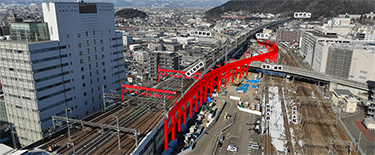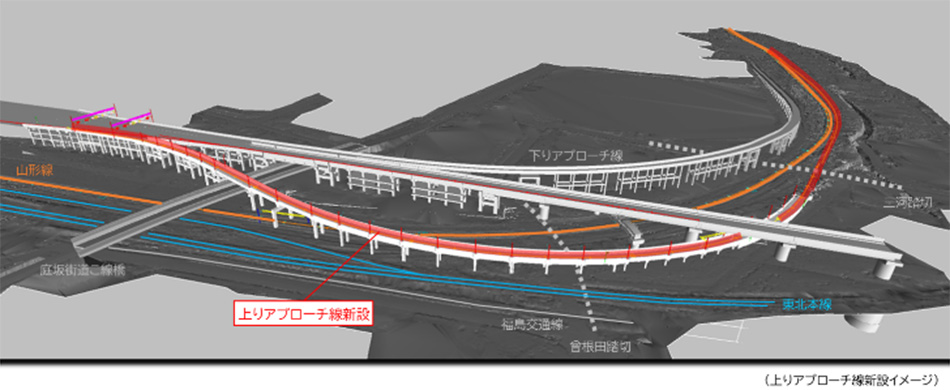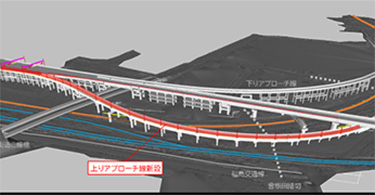OUR WORKS
Project Introduction FUKUSHIMA APPROACH PROJECT
MEMBERS
-
 Kengo Sato
Joined JR East in 2017
Responsible for:
Kengo Sato
Joined JR East in 2017
Responsible for:
Power Distribution
System and Design -
 Ryo Yamaguchi
Joined JR East in 2011
Responsible for:
Ryo Yamaguchi
Joined JR East in 2011
Responsible for:
Substation System・Design
and Site Supervisor -
 Shunsuke Kudo
Joined JR East in 2015
Responsible for:
Shunsuke Kudo
Joined JR East in 2015
Responsible for:
Telecommunication
System and Design -
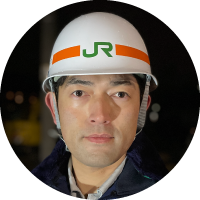 Shinya Yamada
Joined JR East in 2015
Responsible for:
Shinya Yamada
Joined JR East in 2015
Responsible for:
Train Control System
and Site Supervisor
Aiming for further improvement
JR East is promoting a project to establish an approach line connecting the conventional line (Ou line) and the Shinkansen platform at Fukushima Station in order to shorten the restoration time of the schedule in case of transportation failure.
Currently, Yamagata Shinkansen Fukushima Station separates and connects the Yamabiko-Tsubasa combination only on one line (Line 2 down), so there is a level junction between Yamabiko-Tsubasa and Tohoku Shinkansen down train.
This time, by separating the approach line from the upper and lower lines, we will eliminate the plane crossing of two sides, improving transportation quality,convenience and comfort.
The Electrical Systems Integration Office is responsible for research, project management, design and construction management of the railway electrical systems for this project.
-
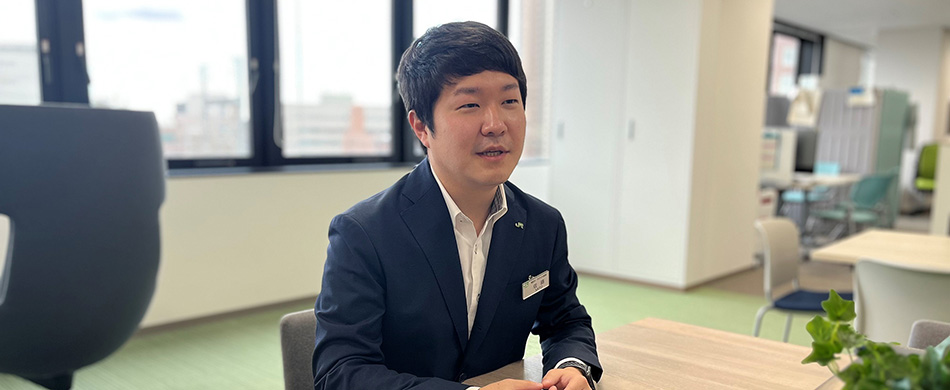
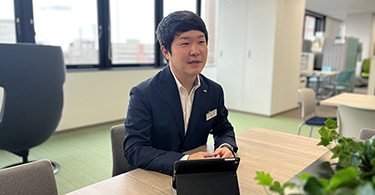
PROJECT 01
As a supervisor of power distribution equipment
Kengo SatoI am a member of the department in charge of designing train lines, power distribution, and renewable energy-related construction in the Tohoku area, and I am in charge of new station construction, bridge station building construction, and power distribution design work for the Fukushima approach line project.
In this project, we will install an electric snow melting machine to prevent freezing of turnouts to be newly installed at the approach area, and new departure signs and boarding gate guidance at station platforms that will be newly put into operation. In order to proceed with the design, we discuss with the sales and maintenance departments to study and propose equipment specifications that will allow customers to use the station more comfortably, and we are working to create better equipment that can be used in the future. On the other hand, there are many issues to be addressed, such as studying voltage drops in order to select power supply cables for equipment and considering steps for switchover, which involves not only in our team but also stakeholders in other departments. We also share issues with related parties at regular meetings and aim for optimal power distribution equipment configuration to push the project forward smoothly.
We will strive to ensure the promotion of projects while ensuring safe and stable transportation, and will continue to work on our operations so that we can contribute to further improving the convenience of the Tohoku-Yamagata Shinkansen. -
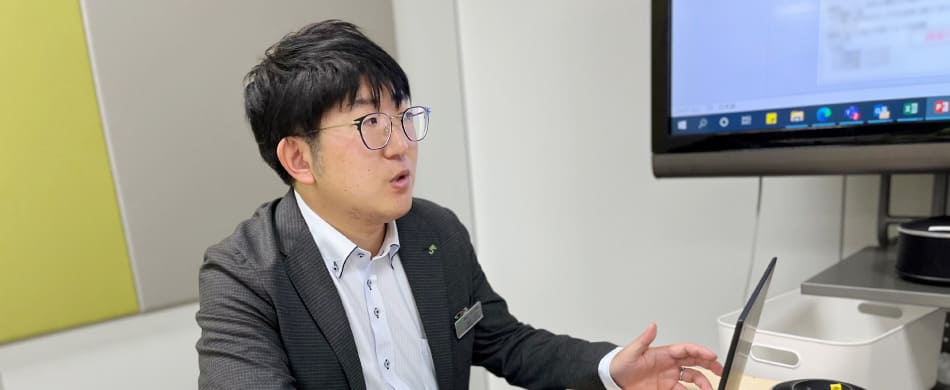
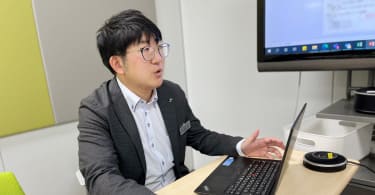
PROJECT 02
As a supervisor of designing substations
Ryo YamaguchiI am a member of Energy Department, and I am in charge of the design of substations and other facilities in the Tohoku area and construction supervision. Substations supply electricity to trains, and in the event of an accident, they shut off electricity and prevent the spread of accidents. Substation systems are a challenging and interesting field because they require basic knowledge of electricity and railway-specific skills.
In the Fukushima Approach Line Project, the construction of a new Fukushima Approach Line constructed by the Civil Engineering Division will be carried out by power outage work, and by expanding this power outage time, it will be possible to proceed with construction more safely and in a shorter period. This time, we improved the substation facilities adjacent to Fukushima Station and worked with other departments to extend the power outage time. When improving substation equipment, we examine switchover steps, equipment specifications, prepare protective devices, and secure power outages necessary for work. In particular, since the power outage time is short, it was challenging to coordinate the power outage arrangement and consider the construction method, but we held many meetings with related parties such as the maintenance department and the construction company, and we were able to proceed steadily with the construction by organizing the construction method and the contents of the confirmation test with safety as the top priority. Individual strength is necessary, but collaboration with many stakeholders is very important for the project to proceed. We will continue to promote this project with a sense of responsibility and an awareness of collaboration so that we can share the joy with everyone when the Fukushima Approach Line is completed. -
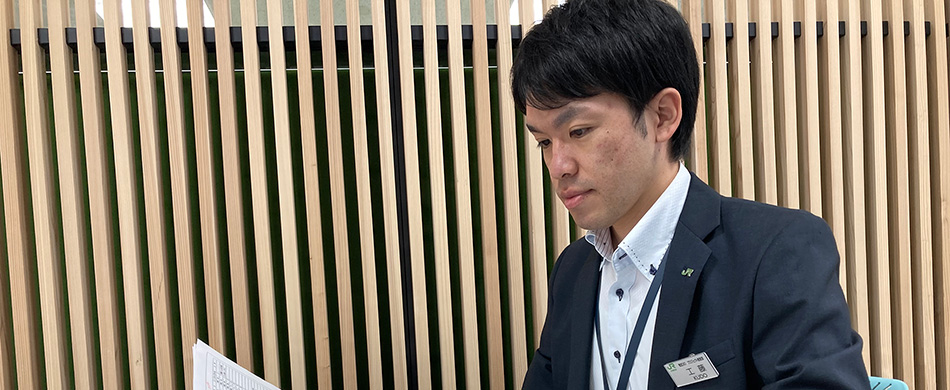
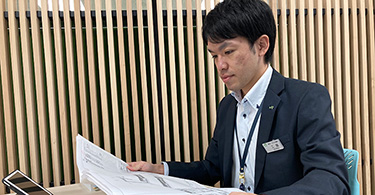
PROJECT 03
As a designer of telecommunication equipment
Shunsuke KudoI am a member of telecommunication design department, and I am mainly in charge of construction orders, budget management, technical examination, and coordination with internal and external parties related to communication equipment in stations and along railway lines.
We have a wide range of communication equipment, such as disaster prevention information systems that support safe and stable train transportation, optical and IP networks that connect bases, etc., so we are learning every day as we proceed with our work.
In the Fukushima approach line project, one of the major issues was the consideration of cable route switching, because the leaky coaxial cable that transmits and receives radio waves in the Shinkansen train radio equipment that connects the dispatcher and crew interferes with the location of the new approach line. Usually, we refer to the construction methods of similar projects and consider the construction method that matches the site, but this time, there were no similar cases, so we had to proceed with the examination from scratch. Starting with field surveys, examining cable laying methods, designing line quality and conducting calculations, followed by procedures for changing radio station licenses, construction management on the day of switchover, functions confirmations, etc. I was able to proceed and complete the cable switching.
In such a large-scale project, one of the great rewards is to be able to build facilities that reflect my opinions. I will continue to work hard with an awareness of improving the quality of services for customers beyond the project. -
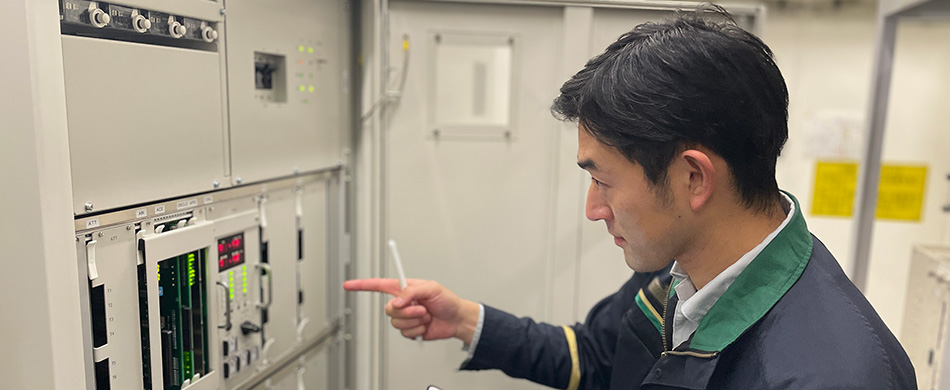
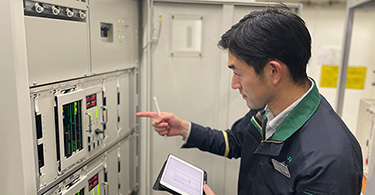
PROJECT 04
As supervisor of train control system
Shinya YamadaCurrently, I am a member of the department that supervises the construction of train control systems, and I am in charge of the Fukushima approach line project. When you hear the word “construction supervisor,” many people may have an image of a person who is stationed at the work site and supervises the construction work. It is a workplace that requires both coordination and technical skills.
The train control system, which I specialize in, consists of many pieces of equipment, each of which is directly connected to safety. In particular, level crossing security devices are closely related to pedestrians. In order to ensure the safety of level crossings due to construction work, especially with the change in the local environment in the process, it is necessary to understand the overall process and to proceed with work while confirming that each function works correctly as a system. It comes with a lot of pressure, but when the results of the work you've done take shape as railway equipment, you can feel a sense of accomplishment that you're glad you did it.
Much of the railway work is carried out at night. For customers who use railways on a daily basis, it may not feel very familiar, but we are advancing construction and supporting life infrastructure through railways behind the scenes. It is a fulfilling business that can be carried out with pride.

